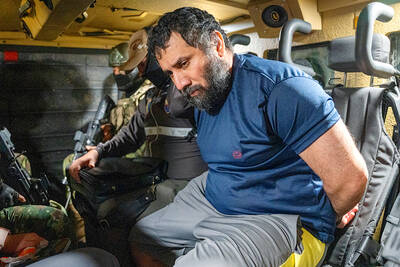The archeologists are in raptures about the close to 500-year-old shipwreck currently being removed from the seabed off Namibia’s southern coast.
“This is a world heritage that needs to be carefully preserved,” says Bruno Werz, the archeologist leading the excavation.
His colleague, Francisco Alves agrees, saying the find provides a window into bygone times of seafarers and explorers.
Their work is concentrated around the wreck of a Portuguese merchant ship discovered along a restricted area 7m below sea level on the treacherous Atlantic coast about 160km south of Luederitz.
The ship had been carrying a treasure of gold coins from the 16th century, copper ingots and silver coins, canons, swords and ivory, as well as pewter tableware, ceramic carafes and rare navigational instruments.
The vessel — a Nau — was discovered during the sea-walling of a dredge mine in the area of the country classed as a Sperrgebiet or no-go zone.
“This treasure is so extraordinary, because we really have found an extremely well-preserved part of history,” Werz says. “We are very lucky, because it was lying beneath the sea in the high-security diamond mining area, which means that treasure seekers and hobby divers were unable to exploit this find and everything is still in its place”.
Webber Ndoro from the African World Heritage Fund says the shipwreck not only gives an insight into life aboard a vessel of its kind in the 1600s, but it also allows for conclusions about trade at the time.
“This ship really allows for a neutral insight into the world 500 years ago,” he said. “Until now, the history of the time was written by the Portuguese themselves.”
Archeologists and experts from Namibia, South Africa, Zimbabwe, the UK, the US and Portugal are working round the clock to retrieve the remains of the ship by Oct. 10, because the costs of sea-walling the site situated in a so-called mini-mine run into thousands of dollars daily.
Namibia’s state diamond mining company, Namdeb, has lent its expertise to the operation.
“They know how to find diamonds in the desert and thus they also know how to spot coins and other small objects,” Namdeb archeologist Dieter Noli said.
So far thousands of gold and silver coins have been found and are being kept under lock and key at the Bank of Namibia in the capital Windhoek. Tonnes of copper and tin are safely stored in sheds on Namdeb premises.
“These ingots still clearly show the trident that was the seal of the merchant house Jacob Fugger, the main suppliers of the Portuguese crown at the time,” Alves explains.
“And then the gold coins that show a very specific embossing that shows they were minted after October 1525 and were of such high quality that everyone wanted them,” he says.
The 60 elephant tusks from the ship appear to indicate that the vessel was destined for India, because Indian carvers apparently preferred the harder African ivory.
Ndoro says the ship showed that “globalization is not a modern day phenomenon, even in those days people traded between the continents of Europe, Africa and Asia.”
He is convinced that more finds of this nature could me made along the Namibian Coast.
“It hasn’t been called the Skeleton Coast for nothing and Namibia should begin training its own archeologists to prepare for what it could find in future,” he said.
The treasures found belong to the Namibian government, which is funding the excavation.
But some artifacts are to be taken elsewhere for research and preservation purposes, an exercise that could take up to 30 years to complete.

Drug lord Jose Adolfo Macias Villamar, alias “Fito,” was Ecuador’s most-wanted fugitive before his arrest on Wednesday, more than a year after he escaped prison from where he commanded the country’s leading criminal gang. The former taxi driver turned crime boss became the prime target of law enforcement early last year after escaping from a prison in the southwestern port of Guayaquil. Ecuadoran President Daniel Noboa’s government released “wanted” posters with images of his face and offered US$1 million for information leading to his capture. In a country plagued by crime, members of Fito’s gang, Los Choneros, have responded with violence, using car

CYBERCRIME, TRAFFICKING: A ‘pattern of state failures’ allowed the billion-dollar industry to flourish, including failures to investigate human rights abuses, it said Human rights group Amnesty International yesterday accused Cambodia’s government of “deliberately ignoring” abuses by cybercrime gangs that have trafficked people from across the world, including children, into slavery at brutal scam compounds. The London-based group said in a report that it had identified 53 scam centers and dozens more suspected sites across the country, including in the Southeast Asian nation’s capital, Phnom Penh. The prison-like compounds were ringed by high fences with razor wire, guarded by armed men and staffed by trafficking victims forced to defraud people across the globe, with those inside subjected to punishments including shocks from electric batons, confinement

Canada and the EU on Monday signed a defense and security pact as the transatlantic partners seek to better confront Russia, with worries over Washington’s reliability under US President Donald Trump. The deal was announced after a summit in Brussels between Canadian Prime Minister Mark Carney and European Commission President Ursula von der Leyen and European Council President Antonio Costa. “While NATO remains the cornerstone of our collective defense, this partnership will allow us to strengthen our preparedness ... to invest more and to invest smarter,” Costa told a news conference. “It opens new opportunities for companies on both sides of the

The team behind the long-awaited Vera Rubin Observatory in Chile yesterday published their first images, revealing breathtaking views of star-forming regions as well as distant galaxies. More than two decades in the making, the giant US-funded telescope sits perched at the summit of Cerro Pachon in central Chile, where dark skies and dry air provide ideal conditions for observing the cosmos. One of the debut images is a composite of 678 exposures taken over just seven hours, capturing the Trifid Nebula and the Lagoon Nebula — both several thousand light-years from Earth — glowing in vivid pinks against orange-red backdrops. The new image